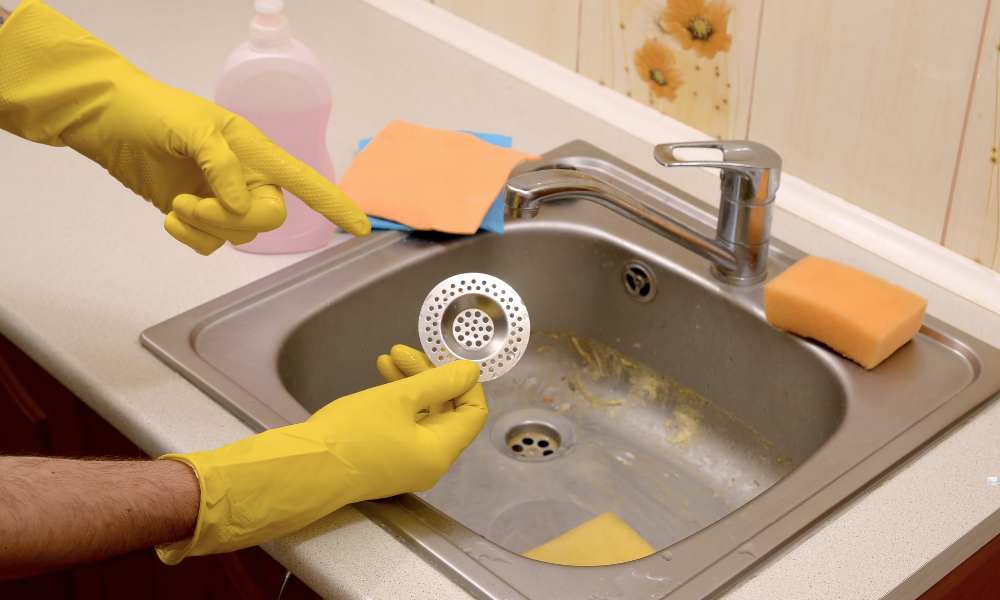Keeping your kitchen looking pristine starts with a clean sink, and if you have a composite sink, you’re in luck. These durable, stylish sinks are a popular choice for modern kitchens, known for their resistance to scratches, stains, and heat. However, to maintain their beauty and functionality, regular cleaning is essential. In this blog, we’ll guide you through the steps on how to clean a composite sink effectively. From daily maintenance routines to tackling stubborn stains, we’ve got you covered. Whether you’re a seasoned cook or just love a spotless kitchen, our tips will help you keep your composite sink in top condition, ensuring it remains a stunning centerpiece in your home for years to come.
A Comprehensive Guide
Understanding Composite Sinks
Composite sinks are made from a blend of materials, typically granite or quartz combined with resin. This mix makes them highly resistant to scratches, stains, and heat. Despite their robustness, they can still accumulate grime and develop stains if not cleaned properly.
Daily Cleaning Routine
Maintaining a clean sink is much easier with regular daily care. Here’s how to keep your composite sink clean on a daily basis:
1. Rinse After Each Use
After using your sink, rinse it thoroughly with warm water to remove any food particles or debris. This simple step prevents build-up and keeps your sink looking fresh.
2. Mild Soap and Soft Cloth
Use a mild dish soap and a soft cloth or sponge to wipe down the sink. Avoid using abrasive pads or harsh chemicals, as they can damage the surface. Gently scrub in a circular motion to remove any residues.
3. Rinse and Dry
Once you’ve cleaned the sink with soap, rinse it again with warm water to remove any soap residue. Finally, dry the sink with a soft, dry cloth to prevent water spots and mineral deposits, ensuring your sink stays shiny and pristine.
Weekly Deep Cleaning
In addition to your daily routine, a weekly deep clean will help maintain the pristine condition of your composite sink.
1. Baking Soda and Vinegar
Baking soda and vinegar are excellent natural cleaners for composite sinks. Sprinkle baking soda over the sink’s surface and then pour white vinegar over it. The mixture will fizz, helping to lift stains and grime. Let it sit for a few minutes, then scrub gently with a soft brush or cloth. Rinse thoroughly with warm water and dry with a soft cloth.
2. Commercial Cleaners
If you prefer commercial cleaners, choose one specifically designed for composite sinks. Follow the manufacturer’s instructions carefully. Generally, you’ll apply the cleaner, let it sit for a few minutes, scrub gently, and then rinse thoroughly.
Removing Stubborn Stains
Sometimes, despite regular cleaning, stubborn stains can appear. Here are some tips to tackle those tough spots:
1. Baking Soda Paste
Create a paste with baking soda and a small amount of water. Apply the paste to the stained area and let it sit for a few hours or overnight. Gently scrub the stain with a soft cloth or brush, then rinse and dry the sink.
2. Hydrogen Peroxide
For particularly stubborn stains, hydrogen peroxide can be effective. Soak a cloth in hydrogen peroxide and place it over the stain. Let it sit for a few hours, then rinse and dry the sink. Be sure to test a small, inconspicuous area first to ensure it doesn’t discolor the sink.
Preventing Future Stains and Damage
Keeping your composite sink in top condition requires more than just regular cleaning. Here are some essential tips to prevent stains and damage:
1. Avoid Harsh Chemicals
Steer clear of using bleach, ammonia, or other harsh chemicals on your composite sink. These substances can break down the resin in the sink, leading to discoloration and weakening of the surface over time. Instead, opt for mild dish soap or cleaners specifically designed for composite materials.
2. Use a Sink Grid
A sink grid is an excellent investment for protecting your composite sink. This accessory sits at the bottom of the sink and acts as a barrier against heavy pots and pans, preventing scratches and dents. Additionally, a sink grid allows water to drain properly, reducing the risk of standing water, which can lead to stains and mineral buildup.
3. Rinse Away Strongly Colored Foods
Certain foods, such as berries, beets, and coffee grounds, have strong pigments that can stain your composite sink if left sitting for too long. To prevent these stains, rinse the sink immediately after handling such foods. This simple step ensures that the pigments don’t have time to settle and leave a lasting mark.
4. Avoid Extreme Temperatures
While composite sinks are heat-resistant, it’s best to avoid placing extremely hot pots or pans directly into the sink. Sudden temperature changes can cause thermal shock, which may crack or damage the surface. Use a trivet or cooling rack for hot items, or allow them to cool slightly before placing them in the sink.
Conclusion
Cleaning a composite sink is straightforward when you follow these simple steps and routines. By maintaining a regular cleaning schedule and using gentle, effective cleaning methods, your composite sink will remain a beautiful and functional centerpiece in your kitchen for years to come. Remember, consistency is key, and a little daily care goes a long way in preserving the elegance and durability of your composite sink. Happy cleaning!
